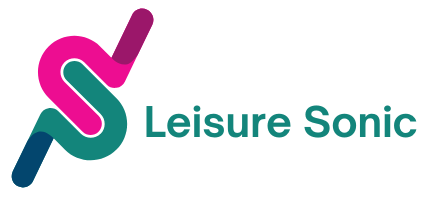Table of Contents
ToggleIn a world overflowing with software solutions, vertical SaaS stands out like a unicorn in a field of horses. It’s the specialized software that tailors itself to the unique needs of specific industries, making it a game-changer for businesses looking to streamline operations. Imagine a tool that knows your industry inside and out—no more one-size-fits-all nonsense!
What Is Vertical SaaS?
Vertical SaaS refers to software as a service solutions specifically tailored for particular industries. These applications focus on the unique needs of sectors such as healthcare, finance, retail, and manufacturing. Customization plays a crucial role, allowing businesses to enhance operations with features that address industry-specific challenges.
In contrast to horizontal SaaS, which offers generalized functionalities, vertical SaaS solutions provide specialized tools and services. Healthcare management systems exemplify this specificity, addressing compliance and patient management requirements. Retail software, on the other hand, may include point-of-sale systems and inventory management tailored to retail operations.
The advantages of vertical SaaS are significant. It often leads to higher efficiency due to reduced complexity in adapting software for industry tasks. Organizations can streamline processes, improve customer satisfaction, and enhance overall operational effectiveness. Vertical SaaS also fosters better integration with existing industry workflows, enabling companies to leverage their established practices while implementing new technologies.
Additionally, vertical SaaS benefits from a closer connection to user feedback. Vendors can more readily incorporate insights from specific industry users, fostering continuous improvement. This feedback loop enhances user experience and drives innovation tailored to the sector.
Businesses seeking software solutions increasingly turn to vertical SaaS due to its apparent benefits. The tailored approach ensures that companies receive the tools they need for their specific challenges, consequently boosting productivity and competitiveness in their respective markets.
Key Features of Vertical SaaS

Vertical SaaS possesses distinct features that enhance its utility in specific industries. Tailored functionalities make it particularly valuable for businesses aiming to optimize operations in their niche markets.
Industry-Specific Solutions
Industry-specific solutions play a crucial role in vertical SaaS. Healthcare applications may include patient management systems and compliance tools. Financial services often feature risk assessment and portfolio management software. Retail solutions encompass point-of-sale systems and inventory management functionalities. Manufacturing tools typically provide production tracking and supply chain management capabilities. Each sector benefits from software that addresses its unique challenges, ultimately leading to increased efficiency and effectiveness in operational processes.
Customization and Flexibility
Customization and flexibility characterize the vertical SaaS model. Clients can modify features to align with their specific operational needs. Businesses in retail, for example, may adjust pricing models to match market dynamics. Organizations in healthcare can tailor workflows to meet regulatory requirements. Such adaptability contributes to a better user experience, as companies utilize software that fits seamlessly into existing processes. Vertical SaaS providers prioritize ongoing updates based on user feedback, ensuring software remains relevant and effective in an evolving marketplace.
Benefits of Vertical SaaS
Vertical SaaS offers numerous advantages, significantly impacting industry-specific operations.
Improved Efficiency
Efficiency improves with vertical SaaS as businesses access tailored solutions directly addressing their needs. Organizations can eliminate unnecessary complexity, reducing the time spent on training. Streamlined workflows accelerate tasks, allowing employees to focus on core operations. Integration capabilities with existing systems further enhance efficiency. Companies leverage established practices while utilizing new technologies seamlessly. Enhanced analytical tools provide valuable insights, enabling better decision-making. Businesses that adopt vertical SaaS often experience quicker onboarding, leading to productive teams sooner. Overall, vertical SaaS solutions empower organizations to operate more smoothly in their specific industries.
Enhanced Customer Experience
Customer experience enhances with the implementation of vertical SaaS solutions. Tailored functionalities address industry-specific pain points. Businesses improve satisfaction by streamlining interactions and providing timely support. For instance, healthcare providers utilize patient management tools, ensuring better communication and service delivery. Retailers benefit from features like personalized marketing and efficient checkout processes. Companies responding to user feedback fosters loyalty, as customers feel valued and heard. Enhanced data collection allows organizations to understand customer preferences better, driving targeted offerings. With vertical SaaS, businesses create a more engaging and responsive customer journey, ultimately leading to increased retention and revenue.
Challenges of Vertical SaaS
Vertical SaaS faces distinct challenges that can impact organizations adopting these tailored solutions. Understanding these hurdles is essential for maximizing benefits.
Integration with Existing Systems
Integrating vertical SaaS into existing systems poses difficulties for some organizations. Organizations often use legacy systems, which may lack compatibility with new software solutions. Custom APIs might be necessary to bridge this gap, increasing initial implementation costs and time. Ensuring data consistency between platforms represents another challenge, as discrepancies can lead to operational inefficiencies. Effective training and user onboarding play critical roles in minimizing disruptions during transition phases. Businesses must prioritize maintaining robust integration capabilities and choosing vendors that support diverse system requirements.
Market Competition
Market competition remains a significant challenge for vertical SaaS providers. Numerous companies vie for market share within specific industries, creating a crowded landscape. Differentiation becomes crucial, as businesses seek unique features that address their particular needs. Price sensitivity is prevalent, forcing providers to ensure their offerings deliver clear value over competitors. Continuous innovation can help maintain a competitive advantage, as it allows organizations to respond to evolving industry demands more effectively. Understanding customer feedback also guides improvements and keeps offerings relevant in this dynamic market.
Vertical SaaS represents a powerful shift in how software solutions cater to specific industries. By focusing on tailored functionalities and industry-specific challenges, it enables businesses to enhance their operations and improve overall efficiency. The adaptability and integration capabilities of vertical SaaS foster a seamless user experience, allowing organizations to leverage existing workflows while embracing innovation.
As businesses increasingly recognize the value of specialized solutions, vertical SaaS continues to gain traction. Its ability to address unique pain points leads to higher customer satisfaction and loyalty. While challenges like integration and market competition exist, the benefits of vertical SaaS make it a compelling choice for organizations aiming to thrive in their respective sectors.





